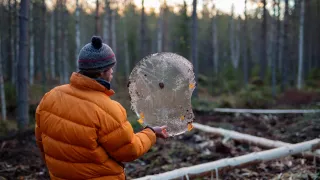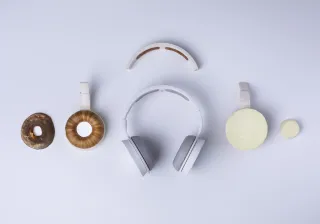The world is full of bags of various kinds – plastic bags, canvas bags, paper bags, etc. – all of which have their own purpose. We move objects from one place to the other on a daily basis for work, leisure, hobbies, celebrations, special events and a range of other purposes. We rarely spare a moment’s thought for how important bags, and their suitability for the purpose in question, really are. In September, we discussed this issue with Finnish consumers.
Environmental friendliness a more important factor when choosing bags
Finns use various types of bags in everyday life, particularly for taking groceries home from a shop. Leisure activity equipment and clothes form the second-largest group of transported items.
Consumers set a range of requirements on the bags they use. Durability is a key feature. Bags must withstand heavy or sharp-edged purchases, as well as liquids, various weather conditions or even washing.
Different sized bags are needed for different purposes. A pleasant user experience also depends on the lightness and shape of the bag, the length of the handles and other carrying features, as well as its versatility. For example, compartments are good for storing keys and valuables. Consumers also appreciate a bag’s look; users love a bag that is neat and stylish, and fits in with their own sense of style.
Biodegradation and environmental friendliness are increasingly important factors in people’s choice of bags. Most Finnish consumers who participated in the survey use bags they bring with them in both food and grocery stores. The use of plastic bags has been further reduced by news coverage of the growing problem of plastic waste. Plastic bags generally have a very short lifespan. After being used as checkout bags, they are mainly used for sorting and transporting materials to recycling points or dumps. The challenge with regard to paper bags lies in their perceived lack of durability when moving their contents from A to B. Reusable bags have a considerably longer lifecycle, but their material is not recyclable. Material is a key factor when selecting bags.
Material developed by Paptic: a substitute for paper and plastic
Paptic Oy has developed a new material made of renewables, which can be used to replace plastic, paper and canvas. This material has plastic-like features such as flexibility, moisture resistance and heat-sealing, and is more water-resistant than paper. The product uses Finnish softwood fibre and other bio-based raw materials.
The material’s properties can be tailored for each type of end-use, with the goal of developing a 100% bio-based material. The company is seeking a range of applications for the new material and aims to optimise it for different applications.
Products made from PAPTIC material can be recycled alongside paper. The first target market is businesses, such as clothing and cosmetics chains in Finland and abroad, that highlight social responsibility and environmental values.
This new material has generated huge interest around the world. It has won accolades such as first prize in the Finnish Environment Institute’s Meriroskahaaste (Sea Garbage) Challenge.
The new material will be evaluated internationally
A survey of consumers was carried out as part of the ‘Puusta pidemmälle’ (More than just wood) project funded by Sitra and VTT[1] (https://www.vtt.fi/medialle/uutiset/joukko-suomalaisia-toimijoita-ratkoo-muovihaastetta-nostamalla-puun-arvoa-liiketoiminnassa) and its first workshop for companies. The project involves testing a fast piloting and innovation workshop model, to help forest companies, designers and marketers jointly develop new business ideas for timber products. In addition, the potential for developing the circular economy for timber products is being investigated, a lifecycle calculator for timber products is being implemented, and a circular economy marketing concept for all companies is being designed. The companies involved in the project are also jointly developing timber products that use technology in a new way. The aim is to create new circular economy business activities in Finland and to promote Finland's international competitiveness.
Finnish consumers had a chance to participate in the survey and share their experiences and needs for various bag solutions. The survey was carried out using VTT’s Owela Open Web Lab platform, during the autumn. As the study progresses, different prototype bags will be created from Paptic fibre material. This will enable consumers to evaluate and get the feel of the new bags and material quickly. In the next phase, the study will be widen to the international markets.
[1] Alongside Lapland University of Applied Sciences, VTT is coordinating co-operation in and organising forest, design and marketing business events, with the aim of developing new circular business models and tools for companies.
The Finnish Environment Institute (SYKE) is studying the potential for, and the environmental impacts of, the recycling and recovery of biodegradable, wood-based composite packaging in Europe, and is seeking ways of improving the resource and energy efficiency of packaging. The Natural Resources Institute Finland, Luke, is developing a life-cycle calculator for bio-based materials. The calculator can be used to calculate the environmental impacts of biodegradable wood-based composite packaging.
Sulapac, Paptic and Elastopoli are developing new kinds of cosmetics packaging, bags and composite materials, while Montisera is commercialising a bioactive compound based on spruce-timber side-streams. Isku is studying possible new materials and products. Ethica facilitates the introduction of circular economy models. Lumene, Stora Enso and Starcke are also members of the network formed by the project.
The project began in the summer of 2018 and will end in September 2019.





